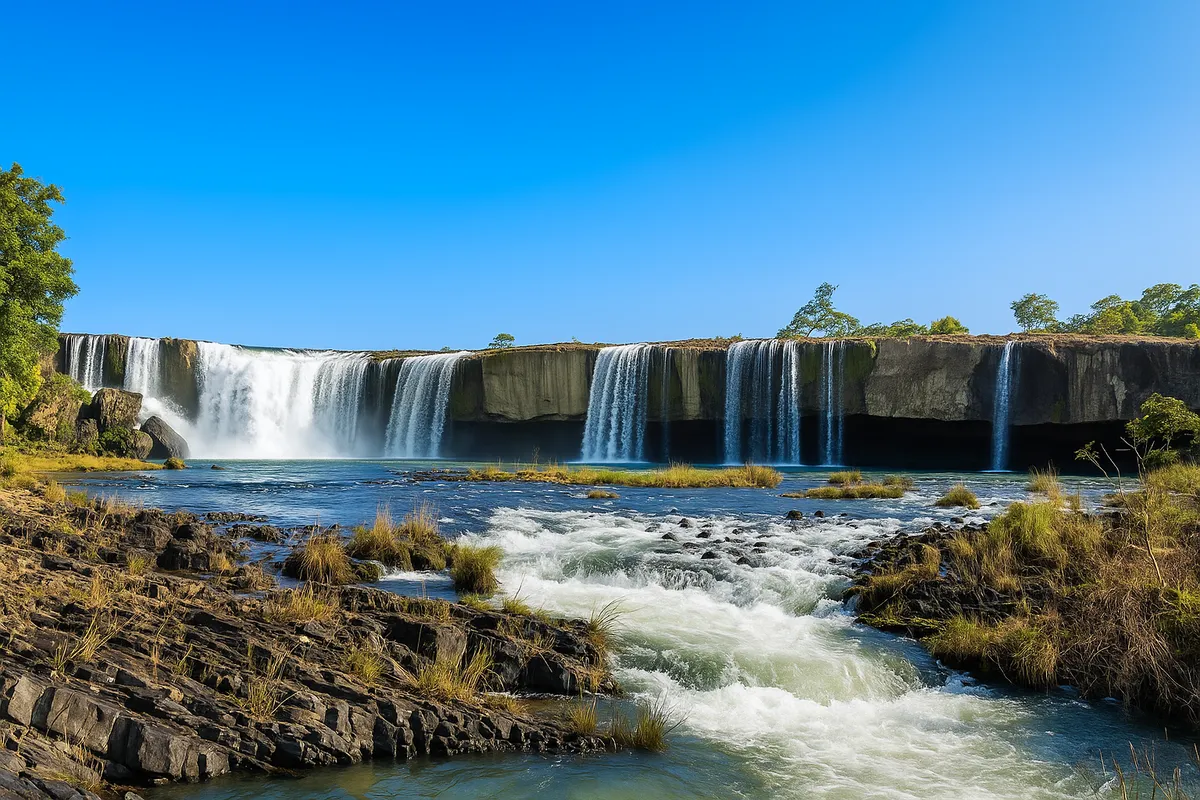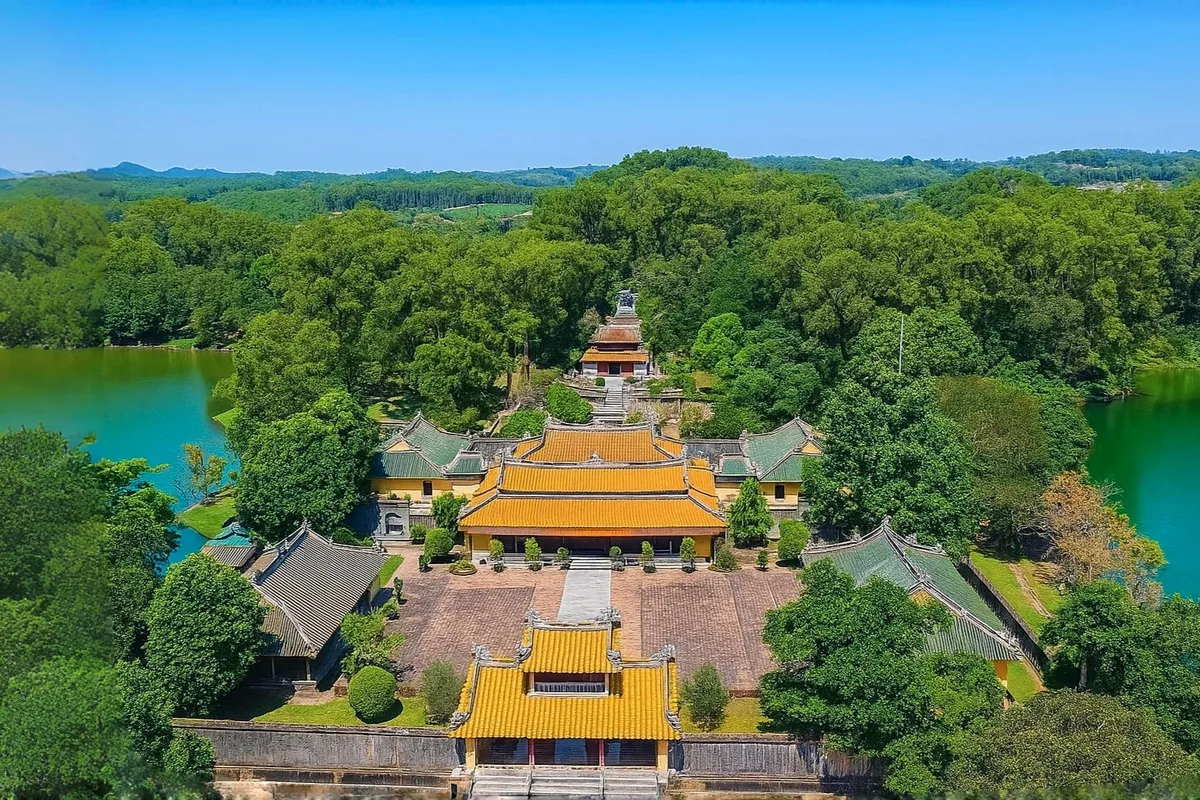Phá Tam Giang - Điểm đến khiến người Huế tự hào
- Thứ năm, 19/06/2025, 09:28 (GMT+7)
Phá Tam Giang - Điểm đến khiến người Huế tự hào
Phá Tam Giang là nơi mặt trời không chỉ mọc từ phương Đông mà dường như cũng trỗi dậy từ mặt nước. Trong khoảnh khắc rạng đông ấy, một màn sương mỏng như khăn voan phủ khắp mặt phá, từng lớp nước lặng lờ chuyển màu như vải lụa nhuộm ánh bình minh. Người ta vẫn thường nhắc đến nơi này bằng vẻ trầm trồ, bởi trong từng nhịp sóng, từng nhành sú vẹt, đều ẩn giấu một câu chuyện dài hơn cả lịch sử.
Nằm cách thành phố Huế khoảng mười hai cây số, Phá Tam Giang không chỉ là đầm phá nước lợ lớn nhất Đông Nam Á mà còn là vùng hợp lưu giữa ba dòng sông Ô Lâu, Bồ và sông Hương. Nơi nước ngọt và nước mặn hòa vào nhau tạo thành một thế giới riêng, nơi vạn vật sinh sôi trong lớp phù sa huyền thoại. Không gian ở đây giống như một tấm gương trời khổng lồ, lúc tĩnh lặng như đang thiền định, lúc lại phản chiếu cả một dải hoàng hôn vàng rực vẽ lên bầu trời những đường cọ tự nhiên nhất.
Giữa vẻ đẹp ấy là rừng Rú Chá, khu rừng ngập mặn nguyên sinh hiếm hoi còn sót lại của miền Trung. Những bộ rễ ngoằn ngoèo lộ thiên như những cánh tay vươn lên khỏi đất, gợi nhắc hình ảnh linh thiêng của thần rừng trong truyền thuyết xứ Huế. Khi nước lớn dâng vào, cả khu rừng chìm trong bóng nước, tạo nên cảm giác như đang lạc bước trong một khung cảnh cổ tích đang cựa mình tỉnh giấc.
Dân gian từng có câu “Ngại Truông Nhà Hồ, ngại phá Tam Giang” như một lời thì thầm từ thế kỷ trước, phản ánh cái dữ dội và huyền bí của vùng đất này. Ngày xưa, phá từng là nơi giao thương đường thủy sầm uất nhưng cũng là nơi gió lộng, sóng ngầm và những vết tích đắm tàu vẫn còn được người già trong làng kể lại qua từng nếp nhăn nơi khóe mắt. Truyền thuyết kể rằng có một thời thần nước nổi giận, làm trôi hàng loạt con thuyền ra cửa biển Thuận An. Phải đến khi người làng dựng miếu thờ và làm lễ cầu an, sóng phá mới chịu yên.
Phá Tam Giang có nhịp sống riêng biệt. Buổi sáng, những chiếc thuyền nhỏ lặng lẽ trôi trong làn sương, ánh đèn vàng leo lét như ánh mắt người đi sớm. Ngư dân dậy từ khi gió còn đẫm sương, thả lưới, kéo nò, gom về mẻ cá kình, cá đối, hàu sữa, trìa non tươi rói. Âm thanh ở đây không ồn ào, chỉ có tiếng nước vỗ mạn thuyền, tiếng mái chèo khua nhẹ, tiếng chim bay ngang đủ để thấy một nhịp sống hiền hậu, chậm rãi mà sâu sắc.
Làng chài Thái Dương Hạ nằm nép mình bên phá, nơi những mái nhà lợp ngói rêu phong quây quần thành từng cụm. Vào ngày hội làng giữa tháng Bảy âm lịch, dân làng lại mở lễ cúng Tổ, làm mâm cơm, rước thuyền và hát hò mái chèo. Cả vùng phá như được đánh thức bởi tiếng trống, tiếng chiêng và những lời hò réo rắt. Đó không chỉ là nghi thức mà là sợi dây gắn kết giữa người và nước, giữa quá khứ và hiện tại.
Đến Phá Tam Giang không thể bỏ lỡ khoảnh khắc chiều buông. Khi mặt trời đổ bóng xuống mặt nước, cả phá như rực lên sắc vàng cam, phản chiếu ráng chiều như những mảng màu thủy mặc. Những cây nò, cây sáo giăng giăng như một mê cung kỳ ảo. Người ta thường ví đây là nơi mặt trời rơi xuống nước, bởi chỉ ở Tam Giang mới thấy mặt trời chìm từ từ như thể tan vào lòng phá.
Có một điều ít ai biết, chính hình dạng giăng lưới của ngư dân Tam Giang đã từng được nhiếp ảnh gia quốc tế ví như những tác phẩm nghệ thuật sống động. Và cũng chính nơi này, tôm đất và trìa hai loại hải sản đặc trưng từng được dâng tiến cho các bậc vua chúa triều Nguyễn vì hương vị đặc biệt không nơi nào có. Câu chuyện truyền miệng ấy không được ghi trong sách sử nhưng lại sống mãi qua từng món ăn.
Ẩm thực Phá Tam Giang là một phần của ký ức xứ Huế. Một đĩa gỏi cá kình trộn rau thơm, một bát cháo hàu nóng hổi hay đĩa bánh xèo tôm đất giòn rụm đều mang hương vị rất riêng, khó lẫn. Mỗi món ăn ở đây là bản hòa âm của nước, gió và đất, mang theo cả cái tình của người chế biến. Khi ngồi trên chòi lá, nghe sóng vỗ, nhấp chén rượu nếp ấm nồng và thưởng thức hải sản tươi rói, cảm giác như cả thế giới bên ngoài đã lùi lại phía sau.
Phá Tam Giang đẹp quanh năm nhưng từ tháng Ba đến tháng Tám là thời điểm lý tưởng nhất. Lúc ấy trời trong, gió nhẹ, ánh sáng dịu dàng và hoàng hôn luôn rực rỡ một cách lạ kỳ. Những ai muốn cảm nhận trọn vẹn vẻ đẹp yên bình nên đi vào buổi sớm tinh mơ hoặc lúc hoàng hôn buông xuống, khi cả vùng nước trở thành sân khấu của trời mây và ánh sáng.
Di chuyển đến nơi này không khó. Từ trung tâm thành phố Huế, chỉ cần men theo quốc lộ bốn chín B, rẽ vào các nhánh đường làng là sẽ gặp những con đường ven phá thơ mộng trải dài dưới hàng phi lao. Có thể chọn xe máy để chầm chậm cảm nhận từng cơn gió lùa qua tóc, từng đợt mùi mắm chượp thoảng qua mỗi làng chài.
Đến đây, cần mang theo lòng kiên nhẫn và một tâm hồn lắng nghe. Phá không phù hợp với những ai vội vàng hay ưa chuộng sự hào nhoáng. Nó là món quà dành cho người biết dừng lại, biết nhìn sâu vào mặt nước, biết nhặt lấy những mảnh ký ức ẩn giấu trong làn gió mặn. Nên đi giày mềm dễ di chuyển, đặc biệt nếu muốn trải nghiệm kéo nò hoặc đi bộ trong rừng Rú Chá. Và nếu thức dậy sớm, đừng bỏ lỡ cơ hội chèo thuyền ra giữa phá khi mặt trời chỉ vừa nhú lên, cảnh tượng ấy có thể thay đổi cảm nhận của một ngày.
Nơi đây từng xuất hiện trong các tác phẩm nhiếp ảnh đoạt giải quốc tế, bởi chỉ cần một tia nắng xuyên qua làn sương cũng đủ tạo nên kiệt tác. Cũng chính ở Tam Giang, nhiều nhà văn, nhà thơ đã tìm được cảm hứng để viết nên những câu chữ đi vào lòng người. Bởi vậy, người ta không đến phá chỉ để du ngoạn mà để cảm. Không chỉ là vùng nước, đó là vùng ký ức đang thở.
Một điều kỳ lạ là người dân nơi đây vẫn giữ thói quen đạp trìa, một kiểu bắt hải sản bằng chân trần trên nền bùn ướt. Trẻ con ở làng từ nhỏ đã biết dùng vỏ tre đan thành giỏ, đi trong sớm mờ sương, đạp từng bước nhẹ nhàng như chơi mà gom được cả buổi ăn chiều. Tưởng chừng đó chỉ là trò trẻ con nhưng lại là nét sinh hoạt có tuổi đời cả trăm năm, truyền từ thế hệ này sang thế hệ khác.
Phá Tam Giang là một bức tranh không bao giờ cũ. Dù nhìn ở góc nào, mỗi khung cảnh vẫn mở ra một cảm xúc rất mới. Đó có thể là dáng người phụ nữ gánh mắm qua cầu tre khi chiều muộn, là tiếng trẻ con cười vang trong sân nhà cạnh bờ nước, là ánh mắt hiền hậu của người ngư phủ giữa ánh nắng nhạt nhòa cuối ngày. Đó là nơi không cần ồn ào để được nhớ, không cần cao sang để được yêu.
Có thể thế giới sẽ còn nhiều nơi đẹp hơn, kỳ vĩ hơn, sôi động hơn. Nhưng Phá Tam Giang là một phần của linh hồn miền Trung, là khoảnh khắc chậm rãi giữa cuộc sống vội vã. Nơi mà người ta không tìm đến để ghi dấu mà để xóa bớt bụi bặm trong lòng. Và khi rời đi, điều còn lại không phải là một chuyến đi mà là một khoảng lặng đẹp đẽ lưu giữ mãi trong tâm trí.

 CHECKIN.VN
CHECKIN.VN








Chia sẻ trên